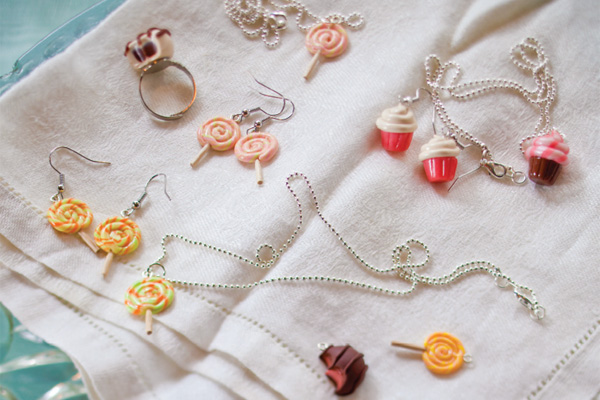Our Blog
Cookiepedia Cookie Tasting Demo @ the Brooklyn Kitchen With Stacy Adimando
Inside the Brooklyn Kitchen
In New York City? Love cookies? While the answer to the first question might vary, the second question had better come back with a resounding YES. Because cookies are awesome, and so is Cookiepedia author Stacy Adimando.
To celebrate Stacy’s awesomeness and the release of her first cookbook, The Cookiepedia, the Brooklyn Kitchen is hosting a special cookie tasting demo on October 22nd. And if sampling delicious cookies wasn’t enough, the Brooklyn Brewery will be supplying beer for the afternoon. Beer and cookies? Best. Pairing. Ever.
The event is free, but you have to RSVP to attend. Guests will also have a chance to win a copy of the book. For more information, visit the Brooklyn Kitchen’s official website.
Cookie Tasting Demo @ the Brooklyn Kitchen
October 22nd, 2011: 2pm – 4pm, FREE
The Brooklyn Kitchen
100 Frost St, Brooklyn NY 11211
(718) 389-2982
www.thebrooklynkitchen.com
Posted by Eric Smith
The Antichrist & Snooter Rooter: Two Ways to Celebrate National Vodka Day
Happy Vodka Day! It is time to toast our Russian comrades for discovering a way to turn potatoes into booze. To celebrate this delightfully drunken occasion, here are two of our favorite recipes from Duane Swierczynski’s The Perfect Drink for Every Occasion.
And since this is October, I thought it appropriate that we pay a little homage to the dead. The Antichrist is a drink that will damn your soul, liver and memory.
The Antichrist:
½ oz. Everclear
½ oz. Bacardi Rum (light or gold)
½ oz. Absolute Peppar
3 dashes Tabasco sauce
Mix all liquors in a shot glass, then add the Tabasco on top.
Posted by Christopher Urie
Microcrafts Microspotlight: Mei Pak, Tiny Hands Making Tiny Cupcakes
“Specializing in sweets and snacks, Mei Park has been crafting customizable food jewelry since 2006.” So reads Mei Pak's bio in the back of Microcrafts, which features tutorials on how to make her famous mini cupcakes, tiny lollipops, and itty-bitty chocolates, each of which are made using multicolored polymer clay.
If you swing by her store, Tiny Hands Online, you can browse through a number of her bestselling charms, rings, earrings and necklaces, many of which actually smell like the food they are inspired by. That maple syrup drizzled waffle necklace, pumpkin pie ring, and donut charm bracelet actually smell just as good as they look.
So go check out her website. Not only can browse by the kind of jewelry, but you can browse by the flavor. IE: Chocolate, strawberry, vanilla… even low sugar. Sweet.
Tiny Hands Online
www.tinyhandsonline.com
PS: Oh, and scope out this fabulous video of Mei via RAW: Natural Born Artists. I've pasted it after the break.
Posted by Eric Smith
Bacon Cheese Muffins: An A+ Snack To Satisfy After School Munchies
With back to school days now in full swing, you may need A+ snacks to put in your little one’s lunch pail, or for a quick nibble after school. Here’s one that will definitely win top honors… easy-to-bake Bacon Cheese Muffins.
The crisp bacon bits, mixed into the wholesome muffin goodness with melted cheese inside is sure to make this a winning treat!
Posted by Elizabeth Ann Quirino
Drink Me: Don’t Argue with this Alice in Wonderland Flask
With its psychedelic gigantic mushrooms and tempting “Drink Me” tag, how could anyone, never mind just Alice, resist taking a sip from this fantastic flask? That’s right. They couldn’t. And neither could you. So drink up.
Lori, the creative mind behind the Etsy shop Kitschville, crafts a number of unique flasks, from Powerpuff Girls to these pulp-esque best friend designs. All of her bottles, packed with literary references or not, feature graphics printed on treated, water resident, heavy-duty vinyl.
Scope out her full shop over on Etsy. Oh, and if you’re afraid you won’t be able to fill up your potential flask… relax. She has funnels.
Alice in Wonderland Flasks @ Etsy
kitschville.etsy.com!
Posted by Eric Smith
Life is a Game of Chess: The Top Ten “Chessmasters” in Pop Culture & Literature
Life is a game of chess. Somethingsomething Queen takes King. I don’t know.
Chess, that master game of strategy, has always been a popular motif in literature and popular culture, especially in the realms of genre fiction, and the Chessmaster himself is often one of the most popular characters in the story. You know what I’m talking about – he’s smug, clever, full of secrets hid behind a smarmy little smirk. He knows the endgame well before the first pawn is placed, and he spends the entire story manipulating his opponent(s) to reach that one desired outcome, whatever it might be.
Sometimes he’s the most evil guy on the board, playing tricks and screwing over everyone to serve his mysterious purpose. Sometimes, he’s the greatest hero, who just knows what has to happen to ensure that the good guys win. Either way, we’re fascinated by him. Try as the reader or audience might, the Chessmaster always remains 3 to 4,000 steps ahead of them – he always keeps us guessing. And even when we think we’ve got him figured out, suddenly the Pawn becomes a Queen and the game is just beginning.
Here are (in no particular order) 10 of the more notable Chessmasters in the realm of pop culture/fiction. Granted, not all of them won in the end, but certainly all knew how to play the game. Some spoilers to follow, but I’ll try to avoid giving away too many details and ruining the fun.
Posted by Thom Dunn






